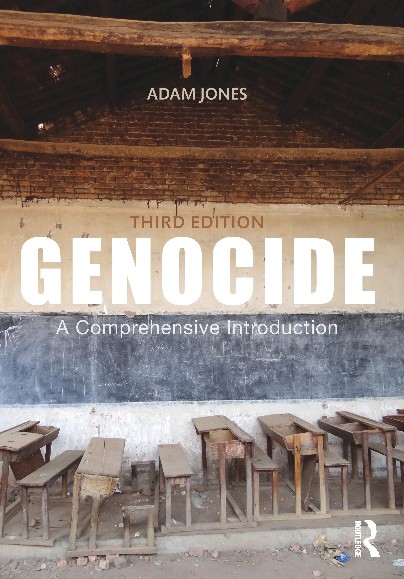 |
| "Syrian youths walk amongst the rubble in the village of al-Hamidiyeh, north of Qusayr, in Homs province." |
By Patrick Cockburn
The Independent, June 28, 2013
"Khalid is too frightened of travelling the 100 miles from Homs to Damascus to ask officials if they know what happened to his three sons, who disappeared 16 months ago as government troops over-ran the rebel stronghold of Baba Amr. He has not heard anything from them since and does not know if they are alive or dead, though he has repeatedly asked the authorities in Homs, Syria's third-largest city, about them. Khalid, a thick-set man of 60 with grizzled white hair -- who used to be a construction worker until he injured his back -- says he dare not make the journey to Damascus because 'as soon as the soldiers at the checkpoints on the road see I come from a place like Baba Amr, with a reputation for supporting the rebels, they are likely to arrest me'. He explains that he cannot risk being detained because he has a wife and four daughters who rely on him. He is the last man left in his family since his sons went missing. Syria is full of parents trying to keep their children alive or simply seeking to find out if they are already dead. It is as if both sides in the civil war are in a competition to see who can commit the worst atrocities. A few days before I spoke to Khalid I saw a picture on the internet of a fresh-faced 23-year-old soldier called Youssef Kais Abdin from near the port city of Latakia. He had been kidnapped a week earlier by the al Qa'ida-affiliated Jabhat al-Nusra while serving in the north-east of Syria, close to the Iraqi border. The next his parents heard of Youssef was a call from their son’s mobile at 4am from al-Nusra telling them to look for a picture of their son online. When they did so, they saw his decapitated body in a pool of blood with his severed head placed on top of it. The Syrian conflict is a civil war with all the horrors traditionally inflicted in such struggles wherever they are fought, be it Syria today or Russia, Spain, Greece, Lebanon or Iraq in the past. For the newly appointed American National Security Adviser Susan Rice, David Cameron or William Hague to pretend that this is a simple battle between a dictatorial government and an oppressed people is to misrepresent or misunderstand what is happening on the ground.
Evidence that both sides have committed supporters prepared to fight to the death is borne out by the estimate of some 100,000 dead published this week by the pro-rebel Syrian Observatory for Human Rights. It concludes that fatal casualties come almost equally from the two sides in the civil war: broadly 25,000 of them government soldiers, 17,000 pro-government militia, 36,000 civilians and 14,000 rebel fighters, though the last two figures in particular are probably understated. Homs, an ancient city at the centre of a province with a population of two million, is a good place to judge the course of the war. It was an early scene of anti-government action in 2011 in the course of which peaceful protests turned into irregular but devastating warfare. Most of Homs today is controlled by the Syrian army, aside from a few important areas including the Old City in the centre, which is held by rebels. Some 400,000 people have fled from here and are now scattered across the rest of the city. The houses they leave behind are occupied by opposition fighters, a fair number of whom are non-Syrian jihadi volunteers intent on waging holy war. 'It is very difficult to talk to the Salafi [Islamic fundamentalists] in the Old City,' says Monsignor Michel Naaman, a Syriac Catholic priest who used to live there and who has sought to mediate and arrange ceasefires between the Free Syrian Army and government forces. [...] Rickety local ceasefires do not solve the Syrian crisis but they do prevent a lot of people being killed, jailed or driven from their homes. The fact that people in Homs have become inured to living in a constant state of terror does not make their suffering any better. 'It must be very dangerous to be a young man of military age here in Syria,' I said to a group of refugees in Homs, leading them to laugh dryly and respond: 'No, you are wrong. They kill men in their 60s and 70s as well!' I asked if they expected things to get better and they dolefully shook their heads. By pledging at a meeting in Qatar last weekend to send more arms and equipment to the rebels, the 11-member so-called 'Friends of Syria', including the US, UK, France, Saudi Arabia, Qatar and Turkey, decided in effect to stoke the civil war in Homs and the rest of Syria. To pretend it is not a civil war or to support the rebel side as somehow uniquely representative of the Syrian people flies in the face of demonstrable facts. West of Homs in the port city of Tartus on the Mediterranean there is a long wall with pictures of many of the 2,000 young men from the city killed fighting as soldiers for the government in the last two years. The Syrian state, in control of most of the country, is not going to implode just because the rebels receive fresh supplies of money and arms. As for Khalid and his hopeless search for his three missing sons, he says, 'I wish the Free Syrian Army and the government would leave ordinary people out of it and go and fight each other.'"














No comments:
Post a Comment
Please be constructive in your comments. - AJ